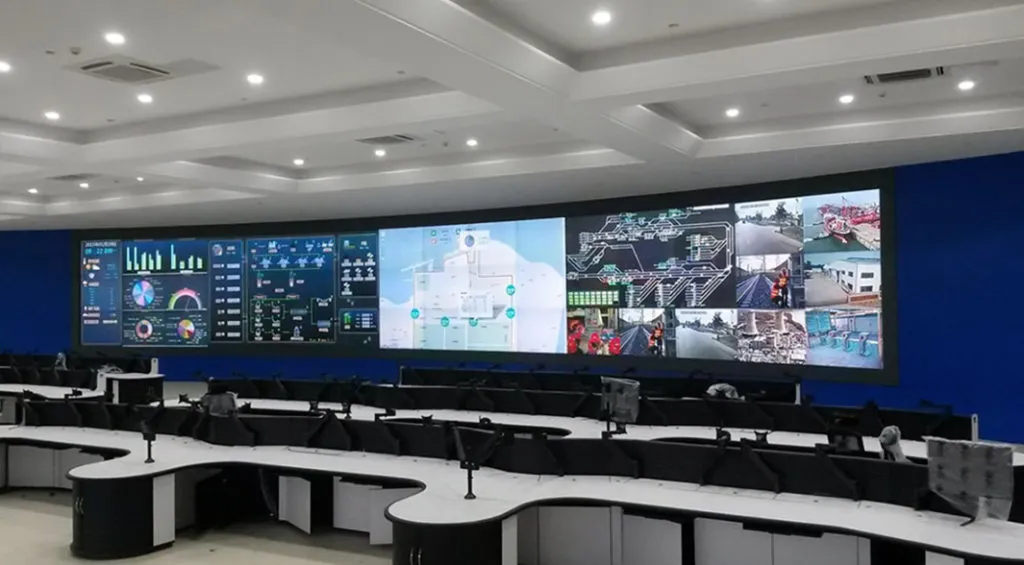(1)The definition of control room
The control room refers to the core functional entity and its associated physical structure, where the operator performs the responsibilities of centralized control, monitoring and management. A control room refers to a central space where large physical equipment and physically disjointed services can be overseen and manipulated. The control room originated from the industrial revolution, and its connotation and concept have been continuously developed with the times. The control center will connect all (or most) basic equipment inside, from the control of industrialized equipment in traditional industries in the early stage of networking and digitization. Today, it is constantly evolving. At present, the control room has gone beyond the traditional scope. It can be said that it is a pan-control room and a cross-control room. The future application prospects are huge. The control room is not a high concept, it is not separated from the people, and there are various control rooms around us. The control room of the community can check the video surveillance of the whole community and the operation of water, electricity, gas, etc.; the subway station has different levels of control rooms to monitor the flow of people, safety, and the situation along the track in the whole station, and receive information from the general control room. Or emergency instructions from other sites.
(2)The evolution history of the control room treatment plan

Going back to the history of the development of the control room, the production control application of the factory bears the brunt. The control room entered the factory around the 1920s (1920-1929) and was used for production control and was widely used for continuous video monitoring and recording on a “24/7/365” basis, for safety management and production scheduling have had a very positive impact.
- Pre-control room
The early control room consisted almost entirely of fixed discrete components, including manual switches, indicator lights, bar graphs, pointer surfaces, video recorders, alarms, etc. Generally speaking, the planning of the control room in the early stage is very large, and the control panel is covered with various indicating surfaces, operation switches and alarm signals. The operator has a wide range of activities, a heavy workload, and a high degree of nerves, so operating errors are inevitable.
- The second stage control room
The second-stage control room installs the video display unit and keyboard into the control panel, improves the human-machine interface, and uses computer information to process and display. The video display unit at this stage is the primary source of information for the operator, and a CRT (Cathode-Ray-Tube) display is selected.
The application of CRT and digital computer technology in the design of the control room greatly enhances the ability of the control room to process and display information, making it possible to gather and display information, thus greatly reducing the number of traditional surfaces and simplifying the equipment of the control room arrangement, thus greatly reducing the burden on the controller.
- The third stage control room
With the development of computer technology, electronic display technology and communication technology, the third stage control room began to use the latest human-machine interface technology, including high-reliability digital technology, network transmission technology, large-screen display technology and artificial intelligence, etc. The operation support function is strengthened, the operator support function is enhanced, and the operation reliability is improved. The control room can provide the operators with appropriate information to correctly judge the status and operation, avoiding confusion caused by too much information and misjudgment and misoperation caused by too little information.
It has been nearly a hundred years since the control room was developed in the 1920s. No matter in terms of the shape of the hardware and system, the method and process of operation, or the idea of operation and management, there has been a leap forward, reaching the extreme. High level. At present, the control room system has completed the evolution of the first three stages, and has developed to the current fourth stage. Many aspects of serving the country’s people’s livelihood have become indispensable skills. However, in terms of the overall application of the control room field, not all have developed to a high level in a balanced manner. There are still many control room applications that are still faced with multitask aggregation and inability to coordinate management and control, human-machine inseparable, multiple sets of keyboards and mice controlling multiple PCs, seat signals unable to link with the splicing screen, complicated authority management, inconvenient maintenance, and inconvenience between various systems. There are many shortcomings such as the inability to achieve interconnection and coordination. In fact, the large-screen display industry abandoned the concept of pure product supply nearly ten years ago and called out the slogan of “solution plan”. The introduction of this slogan has had a very positive impact on the development of the industry and the enterprise itself, and many end users have also benefited from it. But shouting slogans is simple, but difficult to implement. Many “treatment solution provider” centers inevitably have some enterprises with shortage of qualifications. The decision planners of some end users do not have a good understanding of the use of large screens, or the purpose of the project is launched, which leads to the existence of “decent engineering” for large screen projects. Control room projects often cost a lot of money. If they can’t be used in real life, they will be involved in the user’s production or operation process. The term “decent engineering” can’t be more apt to describe it as a waste.

(3)The future control room
Looking to the near future, control room applications will continue to evolve. From the perspective of IT skills, the elements of “5G+AI+Cloud” will surely be more represented and used in the control room. The future scenario will be a platform that gives more intelligent elements based on the pan-control room to facilitate remote collaborative management and intelligent control. From the perspective of display technology, more and better new display technology will also provide more choices for the market, such as large-screen display. This is also about the fourth stage of the evolution of the control room, which is a sign of sophistication. Society and skills are a process of continuous improvement and development, including customer needs and scenarios. The control room is used from demand, as well. For the future, we have more to wait!
